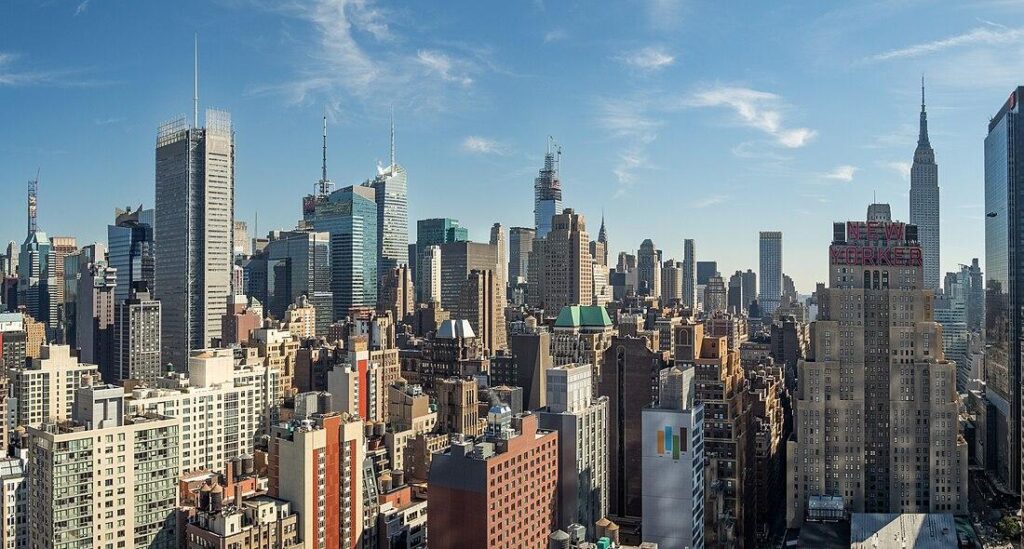New York City has long been celebrated as a global economic powerhouse, a hub of finance, culture, and innovation. However, a recent Forbes article titled “The Menace of Prosperity” challenges this traditional narrative, urging policymakers and residents alike to reconsider the unintended consequences of relentless growth. As the city grapples with rising inequality, infrastructure strain, and shifting demographics, the discussion around what prosperity truly means has never been more urgent. This article delves into the complexities of New York’s economic landscape, exploring the paradoxes that come with success in the nation’s largest metropolis.
Rising Inequality and the Hidden Costs of Economic Growth in New York City
New York City’s dazzling skyline and booming financial sector mask a growing crisis beneath the surface: a sharply widening wealth gap that threatens the city’s social fabric. While GDP numbers climb and tech giants multiply their presence, the benefits of this growth scarcely trickle down to the many who face stagnant wages and skyrocketing living costs. Communities in the outer boroughs bear the brunt of these shifts, as affordable housing evaporates and essential services become luxuries. The economic “prosperity” hailed in headlines too often comes paired with hidden costs-displacement, increased homelessness, and fractured neighborhoods.
Economic growth’s unintended consequences are reflected not only in human stories but stark data. Consider the chart below illustrating median income growth versus rent inflation across NYC boroughs over the past decade:
| Borough | Median Income Growth (%) | Rent Inflation (%) |
|---|---|---|
| Manhattan | 12 | 45 |
| Brooklyn | 8 | 40 |
| Queens | 6 | 35 |
| The Bronx | 4 | 30 |
| Staten Island | 5 | 28 |
Such disparities fuel a growing list of challenges, including:
- Displacement: Longtime residents pushed out by unaffordable rents.
- Economic Segregation: Wealth concentrated in luxury enclaves vs. underserved neighborhoods.
- Strained Infrastructure: Public transit and healthcare stretched thin amid population shifts.
Addressing these issues demands more than surface-level reforms. It calls for a bold reevaluation of how growth is measured and who truly benefits from the city’s “prosperity.”
Balancing Prosperity with Affordable Housing and Workforce Development
New York City’s economic boom, while testament to its global allure, has inadvertently fueled a cost of living crisis, disproportionately impacting middle- and lower-income residents. As rising property values fuel gentrification, the city finds itself at a crossroads-how to maintain the momentum of wealth generation without deepening socioeconomic divides? Solutions require targeted investment in affordable housing projects, streamlining zoning regulations, and creating incentives that encourage developers to prioritize accessibility alongside profitability.
Equally critical is a robust focus on workforce development. Addressing the widening skills gap means expanding vocational training programs, partnering with local industries, and fostering apprenticeships that prepare New Yorkers for emerging sectors. The scaling of these initiatives could be mapped out in key performance indicators as illustrated below:
| Initiative | Projected Completion | Target Outcome |
|---|---|---|
| Affordable Housing Units | 2026 | 15,000 new units |
| Workforce Training Graduates | 2025 | 10,000 certified professionals |
| Public-Private Partnerships | 2024 | 10 active collaborations |
- Incentivize Mixed-Income Developments: Promote diverse housing projects that blend affordability with market-rate units.
- Expand Career Pathways: Develop programs targeting tech, healthcare, and green energy jobs.
- Support Small Businesses: Provide grants and resources to anchor economic inclusivity at neighborhood levels.
Policy Solutions to Foster Inclusive Growth and Sustainable Urban Economies
Addressing the growing disparities in New York City’s economy demands targeted interventions that prioritize both economic inclusion and environmental sustainability. Policymakers must champion affordable housing initiatives alongside investments in clean energy infrastructure, ensuring communities historically marginalized by rapid urban development are not left behind. Furthermore, fostering workforce development through skill-building programs tailored to emerging industries can empower residents to engage in high-growth sectors, creating a more resilient labor market that better reflects the city’s diverse population.
- Affordable housing tax incentives to stimulate mixed-income developments
- Green job training partnerships linking community colleges with local employers
- Small business grants aimed at minority-owned startups in emerging tech and clean energy
- Enhanced public transit investments facilitating equitable access to employment hubs
| Policy Area | Projected Impact |
|---|---|
| Affordable Housing | Reduce displacement by 25% in 5 years |
| Workforce Development | Increase local employment in green jobs by 40% |
| Small Business Support | Boost minority entrepreneurship by 30% |
| Public Transit Expansion | Improve commute times citywide by 15% |
Final Thoughts
As New York City grapples with the complexities of its economic resurgence, the insights from Forbes’ “The Menace of Prosperity” serve as a crucial reminder that growth alone is not a panacea. Balancing prosperity with inclusivity, sustainability, and resilience will be essential for the city’s long-term vitality. Moving forward, policymakers and stakeholders must rethink traditional models to ensure that New York’s economic future benefits all residents, rather than deepening existing divides. The challenges illuminated by this analysis underscore that reimagining the city’s economy is not just an option-it is an urgent imperative.
